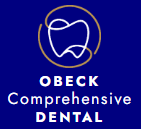To all of those who read this newsletter, thank you. I hope you find this monthly newsletter educational and interesting; perhaps it may even answer some questions about oral health that you may have been pondering. If you have any dental questions or topics you would like me to write about, please let me know! This newsletter will be a deep dive on flossing techniques and tools to help keep the interproximal surfaces of your teeth free from decay and your gums as healthy as possible.
“What you do at home is more important than what we do here.” Although regular professional cleanings and check-ups are important to debride tartar and calculus (calcified plaque buildup) above and below the gumline, it is the patient’s primary responsibility to prevent gum disease by taking care of their teeth at home. This includes brushing twice a day with a soft bristled toothbrush angled toward the gumline to remove any plaque buildup that forms at the base of the teeth and using floss or an interproximal aid once a day to remove the plaque biofilm that forms below the gumline in the pocket known as the “sulcus”.
Plaque is a sticky biofilm made of bacteria, salivary proteins, and food particles that can only be removed by mechanical debridement (brushing, flossing, professional cleaning). If left unattended, the minerals in our saliva calcify this plaque and turn it into hard chunky white buildup known as tartar or calculus. Flossing should be completed in a “C-shaped” fashion by adapting the floss to the contour of both the mesial and distal surfaces of every tooth and gently sliding the floss up and down above and below the gumline into the sulcus to remove all plaque. It is ineffective to floss by quickly sticking floss between the teeth just to remove trapped food.
“Healthy gums shouldn’t bleed.” Whenever there is bleeding while flossing it’s because there is some degree of gum disease: either gingivitis (inflammation of the gums without bone loss caused by bacteria) or periodontitis (chronic bacterial infection of the gums causing irreversible bone loss around the gums). I want to point out that gingivitis is a reversible condition, meaning that the gums can be restored to a healthier state preventing irreversible damage. Periodontitis is irreversible in the sense that the gums and bone supporting the teeth can never be restored once they have been eroded by chronic inflammation. Severe, uncontrolled periodontitis can result in mobility of teeth and bone loss. However, periodontitis can be stabilized and maintained so that future bone loss does not occur.
“Use whatever tools you can to increase compliance with gum care.” Although well-adapted string floss is the gold standard for removing plaque, I am a firm believer that something is better than nothing. I encourage the use of any tool that motivates you to consistently clean your gums. I will make a quick list of interproximal aids and their pros and cons to help you figure out what works best.
String floss
Pros: gives the best adaptation to the tooth structure and can be guided below the gumline to remove plaque
Cons: can be challenging use on yourself especially for those with poor dexterity, can also shred (although shredding can be beneficial to give clues about tight or rough restorations)
Floss Picks
Pros: very easy to use even with one hand, typically increases compliance in patients
Cons: poor adaptation to tooth structure, can cause flossing clefts, not effective for cleaning implants or deep pockets, creates a lot of plastic waste and litter (throw them away not on the ground!)
Interproximal Brushes (or teepees)
Pros: great for cleaning food traps or open contacts
Contacts: does not replace flossing, used more as adjunctive aid, need to be replaced regularly
Water Flossers/Water Picks
Pros: excellent for cleaning around implants, patients can add mouthwash (1:1 ratio) or a tablespoon of bleach to increase antibacterial effects
Cons: does not always fully debride plaque especially in deep pockets, not as portable as floss or floss picks
Kind regards,
John Obeck DDS
